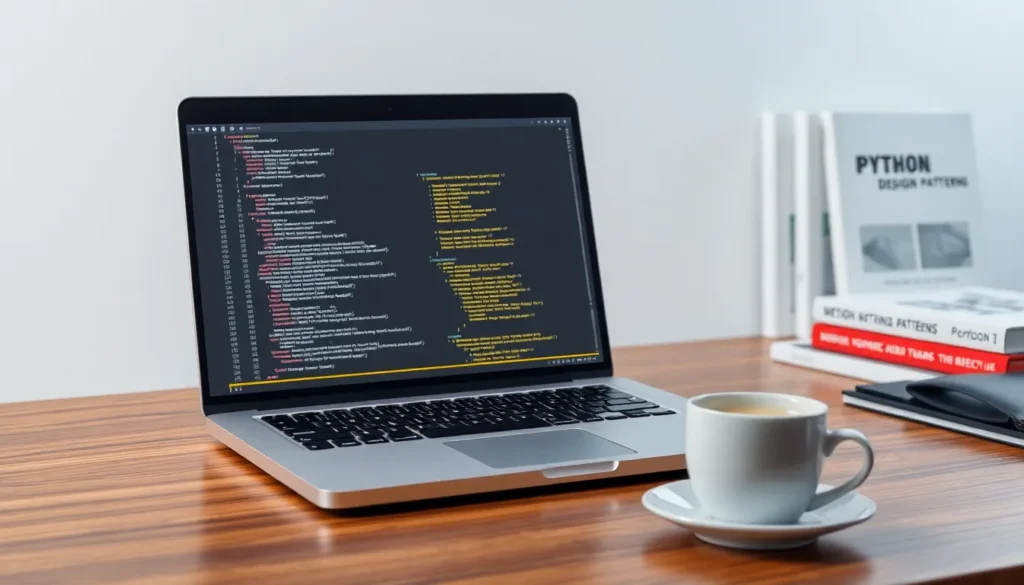Imagine a world where cleaning your home doesn’t involve dragging around a vacuum or scrubbing floors until your back aches. Enter the age of cleaning drones—your new airborne allies in the battle against dust bunnies and grime. These nifty gadgets are not just a sci-fi fantasy; they’re revolutionizing how we think about household chores, making them as effortless as a swipe on your smartphone.
Table of Contents
ToggleOverview of Cleaning Drones
Cleaning drones serve as advanced tools designed for both efficiency and convenience in home maintenance. These innovative devices automate various cleaning tasks, reducing the reliance on manual labor. Equipped with intelligent sensors and navigation systems, cleaning drones can easily maneuver around homes, targeting dust, dirt, and debris in difficult-to-reach areas.
Many cleaning drones utilize high-power suction systems, allowing them to capture particles that traditional methods might miss. Some models even feature mopping capabilities, providing an all-in-one solution for floor maintenance. Users can typically control these drones through smartphone applications, adjusting settings and scheduling cleaning sessions with ease.
A growing number of manufacturers is embracing this technology, offering a range of models suitable for different cleaning requirements. From compact options designed for small apartments to robust units that tackle larger homes, choices abound for consumers. Additional features often include HEPA filtration systems, ensuring that allergens and fine particulates are effectively trapped during cleaning.
Maintenance is straightforward with cleaning drones, requiring minimal user intervention. Regularly cleaning filters and charging batteries enhances performance and longevity. Despite their advanced technology, these devices come at various price points, making them accessible for more households. As the market for home automation expands, cleaning drones emerge as a practical solution for modern cleaning challenges, contributing to a more efficient lifestyle.
Types of Cleaning Drones
Cleaning drones come in various types, each tailored for specific cleaning needs. Their design and functionality cater to both residential and commercial applications, making them versatile tools in the cleaning industry.
Residential Cleaning Drones
Residential cleaning drones are compact and user-friendly. Designed for home environments, these drones efficiently tackle everyday cleaning tasks like vacuuming and mopping floors. They often feature advanced navigation systems, enabling them to clean around furniture and in tight spaces. Many models include smart mapping technology, allowing users to define cleaning areas through mobile apps. HEPA filtration systems in some drones effectively capture allergens, making them ideal for households with pets or allergy sufferers. Their lightweight design and ease of use encourage placement in a variety of home settings, contributing to streamlined home maintenance.
Commercial Cleaning Drones
Commercial cleaning drones offer powerful solutions for larger spaces like offices, warehouses, and retail stores. Engineered for rigorous workloads, these drones often possess high-capacity batteries and extended run times. They can efficiently clean vast areas quickly, which enhances productivity in commercial settings. Many commercial models incorporate scrubber systems for deep cleaning hard surfaces, along with sophisticated obstacle detection to ensure safety in busy environments. Advanced software allows for real-time tracking and performance reports, assisting managers in maintaining cleanliness standards. With the ability to cover large square footage, commercial cleaning drones present substantial advantages for businesses looking to improve hygiene and increase operational efficiency.
Applications of Cleaning Drones
Cleaning drones offer diverse applications for both residential and commercial environments. They enhance cleaning efficiency and improve safety in various settings.
Window Cleaning
Window cleaning drones simplify the task for high-rise buildings and hard-to-reach areas. Equipped with specialized brushes and spray systems, they can effortlessly clean glass surfaces without manual labor. Their ability to navigate autonomously increases safety for workers by reducing the need for ladders or scaffolding. Not only do these drones save time, but they also maintain a streak-free finish, enhancing the building’s aesthetics. Users can monitor the cleaning process through real-time video feeds, ensuring quality control throughout the operation.
Roof Cleaning
Roof cleaning drones specialize in removing debris and moss from rooftops. High-powered suction systems and integrated pressure washers tackle buildup efficiently. These drones not only eliminate the physical stress on individuals but also minimize the risk of accidents associated with roof work. Operators can program flight paths to target specific areas, ensuring thorough coverage with minimal effort. Regular roof maintenance improves longevity and prevents damage, making these drones an invaluable asset for property maintenance.
Industrial Applications
Industrial environments benefit greatly from cleaning drones, which address extensive spaces like factories and warehouses. Powerful scrubber systems and high-capacity batteries allow for deep cleaning capabilities. Drones equipped with advanced sensors identify dirty areas, ensuring no spots are overlooked. These units enhance productivity by minimizing downtime, as they can operate while workers focus on other tasks. Furthermore, real-time tracking software offers performance data, enabling businesses to optimize their cleaning schedules and improve overall efficiency.
Advantages of Using Cleaning Drones
Cleaning drones offer several advantages that significantly enhance cleaning efficiency. First, these devices save time by automating mundane tasks. Users can schedule cleaning sessions and focus on other activities while drones handle floor maintenance.
Efficiency stands out due to advanced sensors that allow for precise maneuverability. These drones navigate around furniture and obstacles, ensuring no area goes untouched. High-powered suction capabilities tackle dirt and dust quickly, delivering superior results compared to conventional methods.
Another advantage involves convenience. Operating cleaning drones through smartphone applications provides users with remote control capabilities. Adjustments and scheduling can be done easily from anywhere, making household maintenance less of a chore.
Cost-effectiveness is another key benefit. Investing in cleaning drones can reduce the need for professional cleaning services over time. With many models available at varying price points, homeowners can find a suitable option that aligns with their budget and cleaning requirements.
Moreover, safety improves as these drones take on challenging tasks in hard-to-reach areas. For example, window and roof cleaning drones eliminate risks associated with heights and ladders. By minimizing manual labor, they promote a safer cleaning experience.
Lastly, environmental consciousness plays a role. Many cleaning drones use less water and energy compared to traditional cleaning methods. This eco-friendly approach aligns with growing preferences for sustainable living solutions.
Cleaning drones not only simplify maintenance but also enhance overall quality of life. Their ability to automate tasks, increase safety, and provide convenience positions them as essential tools for modern households.
Limitations and Challenges
Despite their many benefits, cleaning drones face several limitations and challenges. One significant concern involves battery life. Many models can operate for approximately 60 to 90 minutes before requiring a recharge, which might not cover extensive cleaning tasks in larger spaces.
Additionally, cleaning performance can vary based on surface type. While designed to handle multiple floor types, some drones struggle on high-pile carpets or uneven surfaces. This inconsistency can limit their effectiveness in certain households.
Another challenge lies in the initial cost. Purchasing a cleaning drone often requires a larger upfront investment compared to traditional cleaning tools. This expense may deter some consumers from making the switch, especially if they perceive conventional methods as sufficient.
Navigation and obstacle detection present further hurdles. Though equipped with advanced sensors, cleaning drones may still encounter difficulties with cluttered environments. For effective cleaning, users must prepare their spaces accordingly, which can negate some of the convenience these drones offer.
Moreover, maintenance can become a significant factor. Owners need to clean filters and brushes regularly to ensure optimal performance. Neglecting upkeep can result in decreased efficiency, counteracting the advantages of automation.
Finally, public acceptance remains a potential challenge. Some people may be hesitant to embrace technology for household tasks, preferring traditional cleaning methods. Shifting this mindset requires effective marketing that clearly demonstrates the benefits and simplifies user experience.
While cleaning drones revolutionize cleaning practices, they confront various limitations and challenges that consumers should consider before adopting these innovative tools.
Future Trends in Cleaning Drone Technology
Innovations in cleaning drone technology are on the rise, emphasizing efficiency and user convenience. Advanced AI integration allows for improved navigation capabilities, making drones smarter in managing complex environments. Growing demand for eco-friendly cleaning solutions leads manufacturers to create drones that consume less energy and use sustainable materials in their construction.
Furthermore, developments in battery technology offer extended operational times, addressing a key limitation for existing models. In particular, new lithium-ion batteries enable drones to clean larger spaces without frequent recharging. Enhanced suction systems are also in development, promising to deliver superior cleaning on various surfaces, including carpets and tiles.
Connectivity features continue to evolve, allowing users to control cleaning drones through voice commands or smart home systems. Increased app interactivity provides real-time monitoring and notifications, ensuring users stay updated on cleaning progress. These advancements contribute to more intuitive user experiences, appealing to tech-savvy homeowners.
Emerging market trends highlight a shift towards customizable cleaning options. Consumers enjoy the ability to program cleaning routines based on individual preferences, accommodating various lifestyles. High adaptability in designs and features will cater to both residential and commercial settings, showcasing versatility.
Additionally, manufacturers are exploring drone collaboration, where multiple drones work together to complete larger cleaning tasks more efficiently. This pilot mode allows drones to communicate with one another, enhancing their collective cleaning performance. In industrial applications, drones equipped with machine learning algorithms can analyze cleaning patterns, optimizing routes for greater cleaning efficiency.
Investments in cleaning drone technology continue to attract interest from various industries, reflecting the growing recognition of these tools as essential cleaning solutions. As advancements unfold, the future of cleaning drones promises innovative features that revolutionize home and commercial cleaning practices.
Cleaning drones are reshaping the way people approach household and commercial cleaning. With their advanced technology and user-friendly designs, these devices offer a glimpse into a future where cleaning is efficient and less time-consuming. As innovations continue to emerge, users can expect even more features that enhance performance and convenience.
The potential for cleaning drones goes beyond mere automation. They promise to improve overall cleaning standards while promoting eco-friendly practices. As society becomes more accustomed to these tools, their integration into daily life will likely grow. Embracing cleaning drones not only simplifies chores but also sets the stage for a cleaner and more efficient future in home and commercial maintenance.










